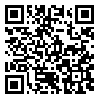Volume 71, Issue 12 (March 2014)
Tehran Univ Med J 2014, 71(12): 780-786 |
Back to browse issues page
Mansoureh Toghae1 
 , Mohammad Reza Ghini2
, Mohammad Reza Ghini2 
 , Seyed Mohammad Hassan Pak-nejad3
, Seyed Mohammad Hassan Pak-nejad3 
 , Elahe Taghvaii Zahmat Kesh2
, Elahe Taghvaii Zahmat Kesh2 
 , Tayeb Ramim *
, Tayeb Ramim * 
 4
4

 , Mohammad Reza Ghini2
, Mohammad Reza Ghini2 
 , Seyed Mohammad Hassan Pak-nejad3
, Seyed Mohammad Hassan Pak-nejad3 
 , Elahe Taghvaii Zahmat Kesh2
, Elahe Taghvaii Zahmat Kesh2 
 , Tayeb Ramim *
, Tayeb Ramim * 
 4
4
1- Department of Neurology, Sina Hospital, Tehran University of Medical Sciences, Tehran, Iran. Iranian Center of Neurological Research, Neuroscience Institute, Tehran University of Medical Sci-ences, Tehran, Iran.
2- Department of Neurology, Sina Hospital, Tehran University of Medical Sciences, Tehran, Iran.
3- Iranian Center of Neurological Research, Neuroscience Institute, Tehran University of Medical Sci-ences, Tehran, Iran.
4- Sina Trauma and Surgery Research Center, Tehran University of Medical Sciences, Tehran, Iran. ,dr.tayebramim@gmail.com
2- Department of Neurology, Sina Hospital, Tehran University of Medical Sciences, Tehran, Iran.
3- Iranian Center of Neurological Research, Neuroscience Institute, Tehran University of Medical Sci-ences, Tehran, Iran.
4- Sina Trauma and Surgery Research Center, Tehran University of Medical Sciences, Tehran, Iran. ,
Abstract: (77426 Views)
Background: Many drugs have been abused by patients for headache management. Celecoxib has not been abuse widely as a pain relief drug for headache. The aim of this study was comparison between celecoxib and prednisolone in bridge stage therapy following medication overuse headache.
Methods: A double-blind randomized clinical trial was done in patients admitted to a private headache clinic in Tehran, Iran at 2012. Patients were selected with 18- 65 years old and 15 days headache per month at least. Prednisone was administered as a 75 mg/day, 50 mg/day, 30 mg/day, 25 mg/day and 10 mg/day dose, in 3 days interval. Celecoxib was administered as a 100mg dose three times per day (first 5 days), twice per day (second 5 days) and one time per day (third 5 days). Headache time, headache intensity, headache duration, analgesic consumption due to severe headache and drug side effects was assessed. We used the visual analog scale to determine the severity of the pain.
Results: One hundred and three patients were enrolled in two groups: celecoxib (53 cases) and prednisolone (50 cases). Twenty and one men and eighty and one women with a mean age of 33.62±9.65 years participated in the study. The maximum fre-quency for headache time in the celecoxib group was 1-4 hours (19 cases) and more than four hours (19 cases). In the prednisolone group the maximum frequency for headache time was more than 4 hours (28 cases) (P=0.149). The frequency of side effects of prednisolone and celecoxib groups were 42% and 18.9%, respectively (Relative Risk=2.2, P=0.011). The most common side effects in both groups were weakness and lethargy.
Conclusion: Considering the positive effect of both drugs in reducing patients' head-ache during withdrawal, celecoxib compared with prednisolone has better efficacy and fewer side effects.
Type of Study: Original Article |
| Rights and permissions | |
 |
This work is licensed under a Creative Commons Attribution-NonCommercial 4.0 International License. |
